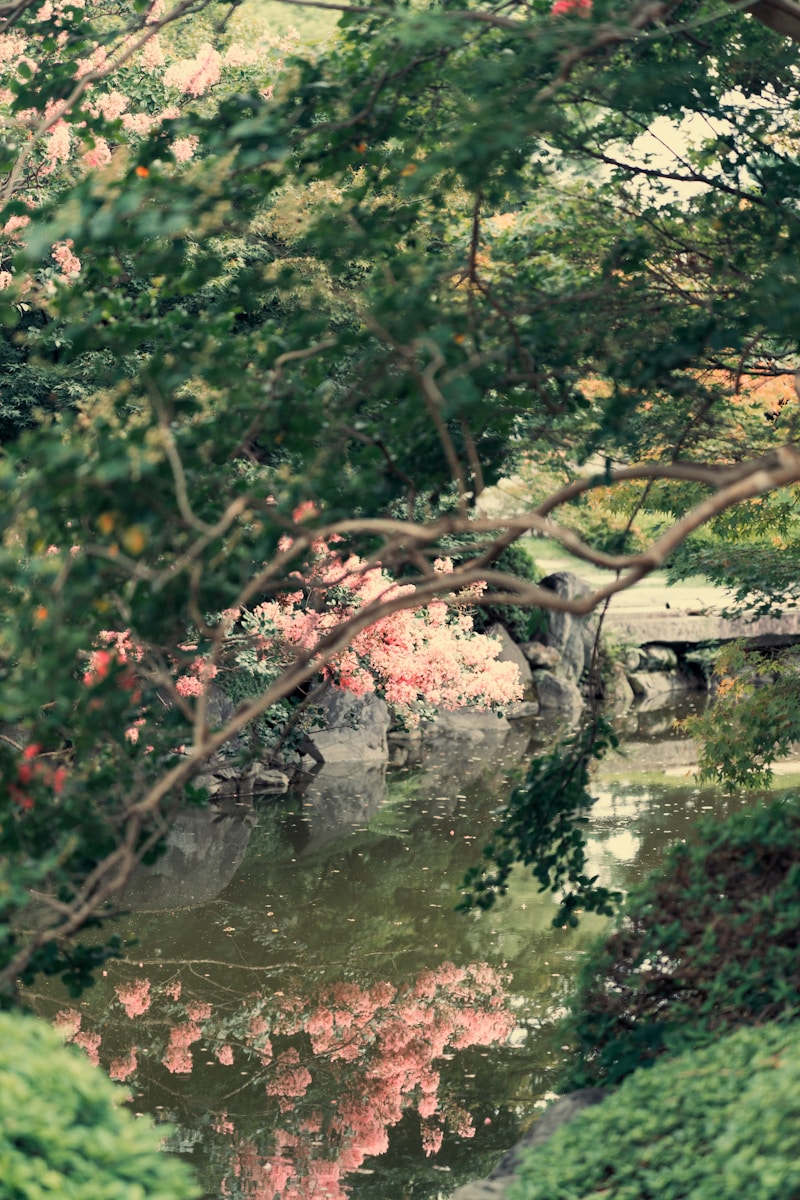by Plant Something Alabama
Share
by Plant Something Alabama
Share

The Japanese Crepe Myrtle is one of the most beautiful flowering trees you can grow. Its smooth bark, white summer flowers, and bright fall colors make it stand out in any yard. Many gardeners know Indian crepe myrtles, but this Japanese kind is different. It is stronger, taller, and resists diseases that harm other types.
Let’s explore why this tree is loved, how it grows, and what it needs to thrive.
Where It Comes From
This tree is native to the Ryukyu Islands and southern Japan. It grows naturally along rivers and coastal forests there. In the 1900s, it was brought to the United States. Plant breeders wanted a crepe myrtle that would not get powdery mildew, a white fungus that damages leaves.
Because of this tree, we now have many hybrid crepe myrtles that are both beautiful and strong.
How It’s Different
The Japanese Crepe Myrtle is not the same as the common Indian Crepe Myrtle. Here’s what makes it special:
-
Bark: It peels in patches to show cinnamon, cream, and gray colors.
-
Height: Grows taller, often reaching 25 to 40 feet.
-
Flowers: Small clusters of white flowers instead of large bright ones.
-
Leaves: Bigger and more leathery.
-
Disease Resistance: Naturally fights off mildew and stays clean in humid weather.
Beauty in Every Season
Spring
New green leaves appear. Young leaves start red and turn deep green.
Summer
Clusters of white flowers bloom. The display is soft and graceful.
Fall
Leaves turn red, orange, and burgundy before dropping.
Winter
The bark becomes the highlight. Its peeling colors look like artwork on the trunk.
Size and Shape
-
Height: 25–40 feet
-
Spread: 15–25 feet
-
Shape: Upright with arching branches
-
Growth Rate: Medium to fast (up to 2 feet per year)
It works well as a shade tree, driveway accent, or centerpiece in the yard.
Best Growing Conditions
Japanese Crepe Myrtle grows well in warm areas with plenty of sun.
Sunlight
Needs 6+ hours of full sun each day.
Soil
Grows in most soils. Prefers well-drained, slightly acidic ground.
Water
Drought-tolerant once grown. Water well the first two years.
Climate
Hardy in USDA Zones 6–9. Survives cold better than Indian crepe myrtles.
Planting and Care
Planting Steps
-
Dig a hole twice as wide as the root ball.
-
Place the tree at the same depth it was in the pot.
-
Backfill with soil and water well.
-
Add mulch, but keep it away from the trunk.
Pruning
-
Needs very little pruning.
-
Trim crossing or weak branches in late winter.
-
Avoid topping the tree (cutting the top flat). It harms the tree’s shape and health.
Fertilizer
-
Use a balanced slow-release fertilizer in spring.
-
Do not over-fertilize or flowering will drop.
Pests and Disease
-
Rarely bothered by insects.
-
Naturally resists mildew and other common problems.
Landscape Uses
You can use Japanese Crepe Myrtle in many ways:
-
As a specimen tree in open lawns
-
Lined along driveways or streets
-
Mixed with shrubs in flower borders
-
Planted in rows for privacy or windbreaks
Hybrids with Japanese Crepe Myrtle Bloodline
Many popular crepe myrtle varieties come from crosses with this species. They inherit the strong bark and mildew resistance:
-
Natchez – white flowers
-
Tuscarora – coral-pink flowers
-
Muskogee – lavender flowers
-
Sioux – pink flowers
These hybrids are also tall and widely planted in the South.
Why It’s Great for the South
Hot summers and humid air can harm many trees. Not this one. Japanese Crepe Myrtle stays healthy even in tough weather. Its bark looks amazing in winter when other trees are bare. And it needs little water or care once established.
Success Tips
-
Plant in a sunny spot.
-
Water deeply at first, then let roots grow strong.
-
Do light pruning only.
-
Enjoy the bark in winter and fall colors later in the year.
How to Propagate
Most are grown from cuttings or seed. Cuttings are best if you want the same traits as the parent tree.
Wildlife and Pollinators
The flowers bring in bees and butterflies. Birds use the branches for nesting. Strong roots help hold soil on slopes and prevent erosion.
A Tree That Keeps Giving
Japanese Crepe Myrtle is more than just a summer bloomer. It brings beauty in every season—fresh leaves in spring, white flowers in summer, fiery foliage in fall, and colorful bark in winter. Few trees offer so much for so little work.
Plant One and Watch It Shine
If you want a tree that grows strong and stays beautiful year after year, this is the one. Plant it where you can see the bark in winter and the colors in fall. Over time, it becomes part of your yard’s story—steady, graceful, and unforgettable.
STAY IN THE LOOP